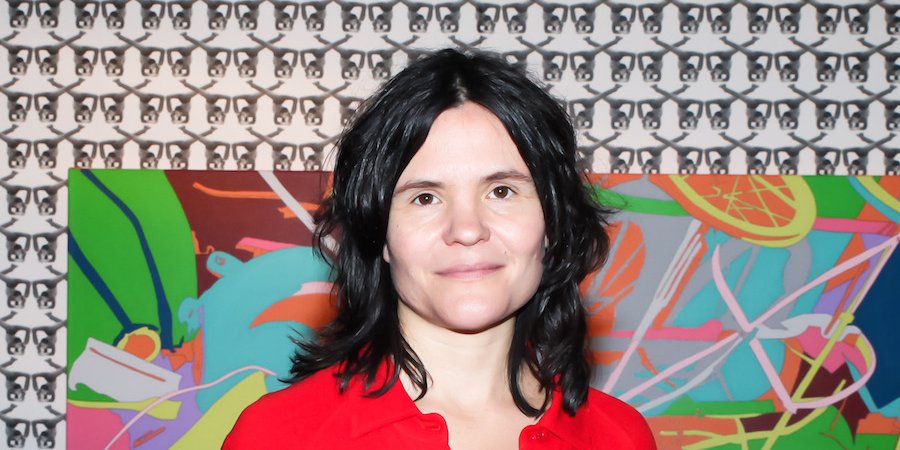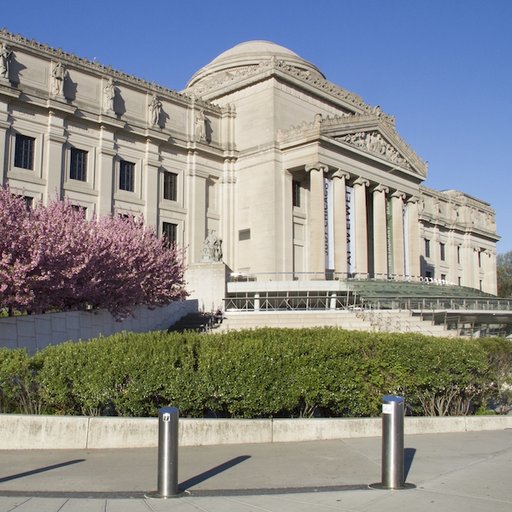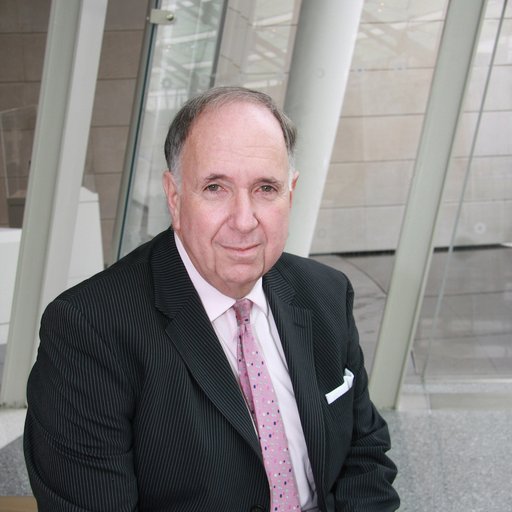Since the launch of its first art fair in Miami in 2003, the New Art Dealers Alliance (NADA) has had ambitions to be more than a “satellite." NADA’s fairs coincide with larger events like Frieze and Art Basel Miami Beach, but rather than orbit the main attraction they lure collectors to out-of-the-way locales (such as Basketball City on a Lower East Side pier, in the case of NADA New York) with the promise of charismatically adventurous art. With their manageable layouts and friendly vibes, they also have an identity that distinguishes them from the corporate mega-fairs.
Sustaining this position—not too far, but not too close—requires constant small adjustments, so some changes are afoot this year. Next week’s NADA New York, which has grown to 108 exhibitors from last year’s 88, boasts an expanded Projects section and a lineup of talks and performances to rival Frieze’s. NADA Miami Beach, the organization’s flagship, recently announced a promising move from its longtime home at the Deauville to the more upscale and centrally located Fontainebleau for December 2015. Meanwhile, in Europe, NADA just completed its third collaboration with Art Cologne, the world’s oldest fair of modern and contemporary art. Artspace spoke to NADA director Heather Hubbs about making NADA New York stand out on a spring calendar teeming with art fairs, the boom in artist-run spaces, and what to expect at the new Miami venue.
Let’s start with NADA New York, which is now entering its fourth year. What would you say are the main points of difference between the New York edition and the Miami flagship?
The venues are quite different. Being inside of a hotel is quite different than being at a pier on the river. But overall, I think the vibe of the fair is the same. People always have a pretty enjoyable experience coming into NADA, for whatever reason. The atmosphere is welcoming and open to people.
How do you see NADA New York as fitting into the city's crowded fair landscape, alongside peers like Independent?
I think we provide a good alternative to Frieze, like we do at Art Basel Miami Beach. We keep our prices affordable, and we try to do a nice layout. We’ve built a brand for ourselves that people respect, and they kind of know what it is, and I think there’s a place for us here.
Who is the ideal NADA collector? Whom do you envision, when putting together the program?
People who are already educated or want to be educated, and are serious about what they’re doing and invested in it. That person could be a new collector or a very established collector, but I think those are the kind of things that are important.
How do you keep NADA fresh? Do you try to bring on a certain number of new exhibitors every year?
The nice thing about NADA is that the application process is very open, and I think the committees do a great job of really considering the proposals and trying to pick things that keep the fair interesting and diverse. We try to change the face of the fair—our graphic identity changes slightly from fair to fair and year to year. We’re building a really great stage this year for performance and programming events, and we didn’t have that last year. We’re always trying to incorporate changes, not just with exhibitors but also with the graphics. We're not constantly changing the layout, but it does change a little bit from year to year. There’s more Projects this year. And we have a whole bunch of programming planned for that event space.
What can you tell me about some of this year’s new exhibitors?
We have four exhibitors from Norway, three from Oslo. We have Carbon 12 from Dubai, which is pretty interesting. It’s the first time they’ve done the fair, and we’re excited about having someone from Dubai. Bill Brady is doing it, and he’s never done it before—he has a space in Kansas City and then, more recently, in Miami. Talcual from Mexico City is a first-time exhibitor—we’re excited about having them there. There's Evelyn Yard, from London.
And there's Water McBeer—this guy does these miniature shows. You can go on his website and see these shows—they look like real gallery shows and there’s openings and stuff, he has all these pictures. It’s really funny. So he’s going to be at the fair, and he’s going to have a little column with a pedestal and a mini-booth on it. He’s got artists making miniature works for the booth.
A number of NADA galleries are artist-run, from Regina Rex to Rod Bianco to Bodega. There seems to be a growing number of these spaces at the fair. Why do you think that is, and what do you make of artist-run galleries generally?
I think there’s just more of these artist-run spaces in the world, and NADA provides a good place for them to try and see what they can do—and to grow, with the Projects section. I think they’re great, and they do some of the more interesting stuff, usually. Part of the reason we started this whole Projects section was that we recognized that not just artist-run spaces but a lot of these other, idiosyncratic programs are out there, and they’re very much contributing to the conversation and deserve a spot in the fair.
NADA is distinctive for being cutting edge yet surprisingly analog, with a real focus on craft and objects rather than the kinds of video-centric pieces one encounters at fairs like Frieze London. Why is that?
It could be that video and new-media work is harder to sell. We definitely have galleries that show video at the fair, and some galleries do quite well with it. The new-media thing is still growing, but we’ve seen an increase in that too.
It’s no secret that there are shakeups in the art market, with blue-chip galleries expanding to unpredecented scale and mid-tier galleries struggling to keep up with operations costs. What would you say is the health of the emerging gallery tier that NADA works with?
I think the emerging galleries have it a little easier for various reasons. Everybody likes the new thing. They have different challenges. Everyone’s aware of the fact that the mid-career galleries are in the hardest position. I’d like to think that they’re all in good health and will live long lives.
NADA New York benefits from proximity to the Lower East Side galleries, which make up a sizable portion of the exhibitor list. How do you think the maturation of that gallery district has affected the fair?
More and more people are looking to Lower Manhattan, for various reasons. The proximity to the galleries helps both—it helps drive traffic to the galleries, it helps drive traffic to the fair. We get a lot of galleries from the Lower East Side that apply to Miami too.
Speaking of NADA Miami Beach: After starting out in the Ice Palace in the Design District, NADA moved to the Deauville all the way in North Miami. This year, you’re moving to the Fontainebleau hotel, which is much closer to the main drag of Collins Avenue and to the convention center that hosts Art Basel. What was behind the move?
It was time for a change. The Fontainebleau is a good fit for us. It’s going to be great to be closer to Art Basel, but it wasn’t the impetus.
Are there going to be any new structures or sections? What is going to change?
I’m still working on the layout, but it’s going to be significantly different. First of all, the Fontainebleau is very different from the Deauville. It’s also one ballroom—well, they have several, but we’re only using one. It’s not the three-room situation we had at the Deauville. So I think it definitely will have a different feel.
The Fontainebleau also has better restaurants, like Scarpetta and Hakkasan. Will they be involved at all? Food has become a marquee art-fair attraction.
Definitely. It has amazing restaurants, actually. We’re hoping that people will stay there, eat there and host things there. And I think people will. It will just happen naturally.
The Deauville did have the advantage of being relatively affordable, and it became a big hangout for the fair's artists. Do you think they will feel as welcome at the new venue?
I hope so. It’s a nice hotel, but it’s still the same event at the end of the day. People can still stay close by; there are inexpensive hotels near the Fontainebleau that everyone can stay at, and everyone can hang out there.
Why Cologne? Art Cologne is regarded as the world's oldest art fair of its kind. How do you approach that fair?
They invited us, and we liked the idea of collaborating with another fair. That never happens. I mean, we’re different—we’re not just a fair organization, we’re a nonprofit member organization and we do other things—but it’s rare that somebody would do that, and that was attractive to us. The way in which we collaborate with Art Cologne has changed over the years, but that’s been great. We try things; we can experiment there. And it gives us great exposure in Europe, which might be hard for a nonprofit to do on its own. Cologne’s a great city. It’s nice to be there; it is a solid, strong fair.
It started off as a NADA fair within the fair, and then we changed it to a more integrated situation and started this section called Collaborations. This year we had a lounge for the first time at the fair, and we did some programming—a couple of talks and a performance. This is our first year of being able to do that, and it was great—we’re hoping we can do more of that next year.
Do you ever see NADA expanding into an entity that exists beyond the member organization and the fair context? You've been emphasizing events recently, at the fairs as with the new performance and talks lineup for NADA New York and outside them as with the Art Book Swap at MoMA this past March.
I would be happy to see the organization grow more outside of the fairs. It’s happening slowly; we’re doing more and more programming year-round already, and we definitely want to do more of that. We’ve got some ideas, for sure.























